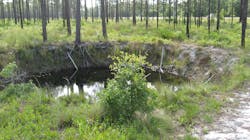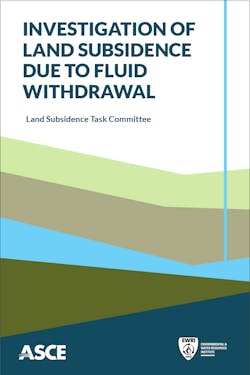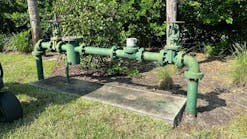A new report from the American Society of Civil Engineers, Investigation of Land Subsidence due to Fluid Withdrawal, provides an overview of the occurrence, mechanics, measurement, analysis and simulation, and control of land subsidence due to fluid withdrawal with emphasis on groundwater withdrawal.
Land subsidence has been well recognized as one of the major geological hazards by hydrogeologists and engineers. Land subsidence can occur on local and regional scales worldwide and is often discovered only after damage to buildings and important infrastructure occurs.
The book covers:
- Land subsidence processes;
- Rudimentary mechanics of subsidence attributed to the withdrawal of subsurface fluids;
- Traditional techniques identifying, measuring, mapping, and monitoring aquifer system compaction and land subsidence;
- Empirical and theoretical approaches to analyzing and simulating aquifer system compaction and subsidence; and
- Methods and measures used to mitigate subsidence hazards associated with groundwater withdrawal.
Prepared by the Land Subsidence Task Committee of the Managed Aquifer Recharge Standards Committee of the Environmental and Water Resources Institute of ASCE, this report is a key resource for water resources project planners and design professionals, hydrogeologists, and engineers, especially in areas where aquifers are susceptible to land subsidence.
To purchase online, visit the ASCE Bookstore.







